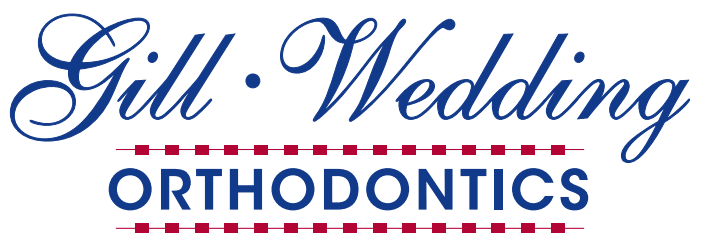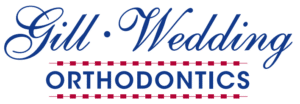No, it is not. Many of our patients are referred by their family dentist; however, many patients are concerned about their health and appearance and take the initiative to schedule themselves for an examination to have their need for orthodontic care evaluated.
An attractive smile and improved self-image is just one of the benefits of orthodontic treatment. Without treatment, orthodontic problems can lead to tooth decay, gum disease, bone destruction, chewing and digestive difficulties, speech impairments, tooth loss and other dental injuries.
Having straight teeth that fit together properly improves function and your teeth and jaw joints can work more effectively. Straight teeth make it easier for you and your dental team to keep them clean. If you ever need a filling, crown or bridge, your dentist can usually do better restoration if the teeth are aligned properly. The appearance of teeth and facial balance is improved. Having a pleasant smile improves self-esteem, confidence and a feeling of acceptance in our daily activities.
Often, orthodontic treatment is most efficiently completed as the adult teeth begin to appear in the mouth. However, many orthodontic problems are easier to correct if detected at any early age before jaw growth has slowed. Early treatment may mean that a patient can avoid surgery and more serious complications. The American Association of Orthodontists recommends an evaluation by age 7 to determine if any problems exist that require “early” attention. After the initial exam, if no treatment is indicated, Dr. Gill and Dr. Wedding will continue to follow the patient periodically at no charge until the ideal timing for treatment is determined.
If you think you or your child would benefit from orthodontic treatment, simply call our office and we will be happy to schedule an appointment for you. When you call to schedule your appointment, our front office staff will request some very basic information concerning you and your child.
Upon arriving, each patient and parent will be seen by our Treatment Coordinator who will take you on a tour of our office and take x-rays including a panelipse and a set of digital photographs of the patient’s face and teeth. A thorough exam will be completed by Dr. Gill or Dr. Wedding.
For a detailed “look” at your first visit, please see our First Visit Page on this site.
There are six important questions that will be answered during the initial examination:
- Is there an orthodontic problem and, if so, what is it?
- What are the treatment options to address any problems, including limitations and benefits of each alternative
- What must be done to correct the problem, and when is the best time to start treatment?
- Will any teeth need to be removed?
- How long will the treatment take to complete?
- How much will the treatment cost? How much will insurance pay? Payment Options?
Today’s technology has resulted in advanced orthodontic procedures, so that the need for removing teeth has been greatly reduced. However, removing teeth is sometimes needed to get the best orthodontic result. Straight teeth and a balanced facial profile are always the goal.
Treatment time depends on each patient’s specific orthodontic problem. In general, treatment times range from 12 to 30 months. An “average” time a person is in braces is approximately 20 months.
The fee for orthodontic treatment varies depending on the nature and severity of the orthodontic problems to be corrected, length of treatment time, appliances to be utilized, etc. The exact cost and financial options will be discussed at the initial visit after Dr. Gill or Dr. Wedding have completed an in-depth radiographic and clinical examination.
Appointments are scheduled according to each individual patient’s needs. Most patients in braces will be seen every 4 to 8 weeks. Invisalign patients will be seen every 8-12 weeks. If there are specific situations that require more or less frequent monitoring, appointments will be scheduled accordingly.
Unfortunately, we cannot schedule all appointments for students during after-school hours. Some of the longer appointments such as putting braces on or taking them off are only offered during normal school hours. However, because most appointments are scheduled 4 to 8 weeks apart, most patients will miss minimal school due to orthodontic treatments. We will make a sincere effort to meet your scheduling needs.
If you choose, your child may attend many of their appointments without a parent being present, or you may choose to accompany your young child into the treatment area. On some occasions, we may request to speak with a parent when they return to update you on their progress.
Generally, braces do not “hurt”. After certain visits, teeth may be sore for a few days. In these situations, pain medications such as Advil or Tylenol will ease the discomfort. However, many of our patients report very little or no discomfort after most visits.
Yes. There is no reason to miss school because of an orthodontic appointment.
Yes. We recommend a mouth guard for all sports, and can provide you with one designed for use during orthodontic treatment.
Yes. However, there may be an initial period of adjustment. Drums and piano are especially easy to adapt to!
No. Delivering shots prior to orthodontic treatment is not necessary.
Absolutely not! It is our belief that each patient should be provided their own braces to achieve the best orthodontic result possible.
Yes! Regular checkups with your family dentist are important while in braces. Your family dentist will determine the intervals between cleaning appointments while you are in braces.
Yes. Once treatment begins, we will explain the complete instructions and provide a comprehensive list of foods to avoid. Some of those foods include: ice, hard candy, raw vegetables and all sticky foods (i.e. caramel and taffy). You can avoid most emergency appointments to repair broken or damaged braces by carefully following our instructions.
We recommend brushing 3 to 4 times a day. We will show you how to properly brush and floss while in orthodontic appliances, and will provide you with devices to help.
If your braces are causing extreme pain, or if something breaks, you should call our office. In most cases we can address these issues over the telephone. If you require an emergency appointment, we will set aside time for you.
Occasionally, but not often, some orthodontic problems are significant enough to require early intervention. However, if a patient is not yet ready for treatment, we will follow that patient’s growth and development until the time is right for treatment to begin. There is no charge for these follow-up visits to evaluate the patient’s “progress”.
Phase One treatment, when needed, is usually initiated on children between the ages of 7 and 10. Phase One treatment usually takes about 12 months. There are several primary objectives for Phase One treatment which include:
- To address significant problems early to prevent them from becoming severe corrections later.
- To develop jaws for crowding concerns and modify jaw growth for an improved jaw relationship.
- To improve self-esteem and self-image, both very important during their formative years.
- To eliminate any situations that are causing damage to the teeth (traumatic bites) or deviation of a normal growth pattern.
It is best to assume that your child will need full braces even after Phase One treatment. The period following Phase One treatment is called the “transition period,” during which growth and tooth eruption are closely monitored. Throughout this period, parents and patients will be kept informed of future treatment recommendations. Transition exams are provided at no charge.
A surprising percentage of our patients are adults. In fact, 25% of all orthodontic patients are adults. Health, happiness, and self-esteem are vitally important to adults. No patient is “too old” to wear braces!
Yes. A tooth with a crown will move just like a tooth with a simple filling. When teeth are missing, orthodontic treatment will aid in the alignment of the remaining teeth.
Teeth, and sometimes entire facial structures, are permanently changed by orthodontic treatment. It is important that the treatment be appropriate and properly completed. Orthodontic specialists, like Dr. Gill and Dr. Wedding, have extensive and specialized training that enables them to provide their patients with professional and state of the art treatments.





